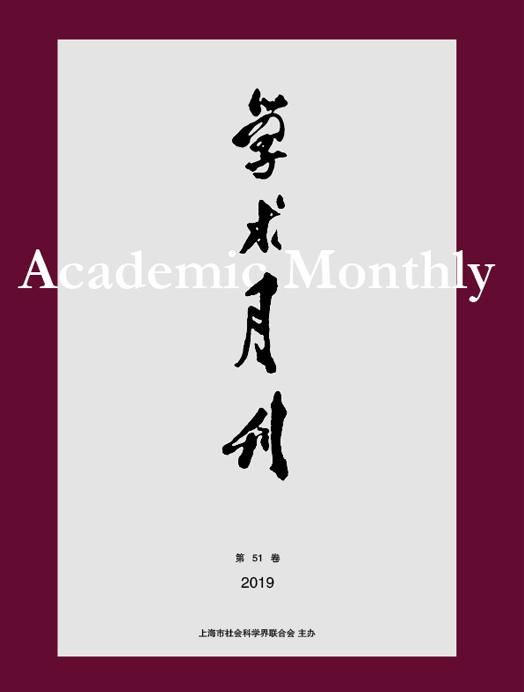Citation:
Lingzheng YU, Xiahai WEI and Jiangtao WAN. Information Technology, Gender Dividend and Factor Income Distribution[J]. Academic Monthly, 2021, 53(3): 63-72.

Information Technology, Gender Dividend and Factor Income Distribution
-
Abstract
This paper examines how the application of information technology in enterprises affects factor income distribution from the perspective of “gender dividend” in the workplace. In the first place, this paper conducts theoretical analysis on the economic logic of how the interaction between information technology and gender dividend affects the income distribution of enterprises, then does empirical study with the data from the China Enterprise Survey by the World Bank. It is found that: on average, information technology has a substitution effect on general labor force, reducing the labor income share. Information technology related skills, such as cognitive and social abilities, have a female-bias, so that compared to male advantage in muscle-intensive skills, females are preferred. Therefore, as the proportion of female workers increases, a good complementary effect between information technology and women’s skills can be formed, which is conducive to the increase of labor income share.The interactive effect between information technology and female dividend is amplified in capital-intensive, heavy industry, larger scale and export-oriented enterprises. This study provides new policy inspiration for how to better deal with factor income distribution and eliminate gender inequality in the new-generation information transformation.
-

-
References
-
Access
-
-
[1]
Yun SHU
. Enabling and Implementing: The Development of Political Party Organizations in the New Technology Era. Academic Monthly,
2019, 51(12): 71-80.
-
[2]
,
. . Academic Monthly,
2017, 49(12): 90-102.
-
[3]
. . Academic Monthly,
2017, 49(03): 141-149.
-
[4]
ZHOU Ye’an
. . Academic Monthly,
2018, 50(8): 33-41.
-
[5]
Zhiming HAN
. The Clarity and the Operational Logic of State Governance. Academic Monthly,
2019, 51(9): 82-94.
-
[6]
CHEN Zhuo
. . Academic Monthly,
2018, 50(8): 42-52.
-
[7]
. . Academic Monthly,
2016, 48(09): 73-83.
-
[8]
Jiexiang FU
. The Paradox of “Fidelity”: Ding Ling’s Female Martyrs/ Identification with Martyrs and Sex Politics in the Revolutionary Age. Academic Monthly,
2019, 51(7): 138-148.
-
[9]
,
. . Academic Monthly,
2017, 49(01): 57-65.
-
[10]
LI Mengmeng
. The Impact of Rural Collective Operating Construction Land Entering the Market on the Income Gap between Urban and Rural Areas. Academic Monthly,
2023, 55(10): 49-60.
-
[11]
ZHANG Xinyu
. Policy Dividends, Geographical Endowments and Regional Disparity of Economic Growth —— Evidence from Development Strategy of Yangtze River Economic Belt. Academic Monthly,
2023, 55(7): 46-60.
-
[12]
. . Academic Monthly,
2018, 50(01): 30-45.
-
[13]
Xing WANG
. Skill Formation, Skill Formation System and Research Imagination of Economic Sociology. Academic Monthly,
2021, 53(7): 132-143.
-
[14]
Chunzhen GUO
, Haiyang WANG
. Normative Structure of the Right to Erasure in Personal Information Protection. Academic Monthly,
2022, 54(10): 92-106.
-
[15]
Cheng Sumei
. . Academic Monthly,
2018, 50(5): 36-44.
-
[16]
YANG Xianbin
. On Rules for the Fair Use of Private Information and the Optimized Paths. Academic Monthly,
2023, 55(6): 101-115.
-
[17]
. . Academic Monthly,
2016, 48(09): 99-109.
-
[18]
Wenhong ZHANG
, Fei LIU
, Jun XIANG
. Relative Income and Class Identification of Chinese Couples. Academic Monthly,
2021, 53(9): 139-150.
-
[19]
Lin QI
. The Path of Technology-oriented and the Construction of Art Theory. Academic Monthly,
2021, 53(7): 151-160.
-
[20]
Hongquan LIAN
, Jialin JIANG
. Could Dialect Skill Act as a Signal of Social Identification. Academic Monthly,
2020, 52(4): 55-68.
-
-




 沪公网安备 31010102003103号
沪公网安备 31010102003103号 DownLoad:
DownLoad:
